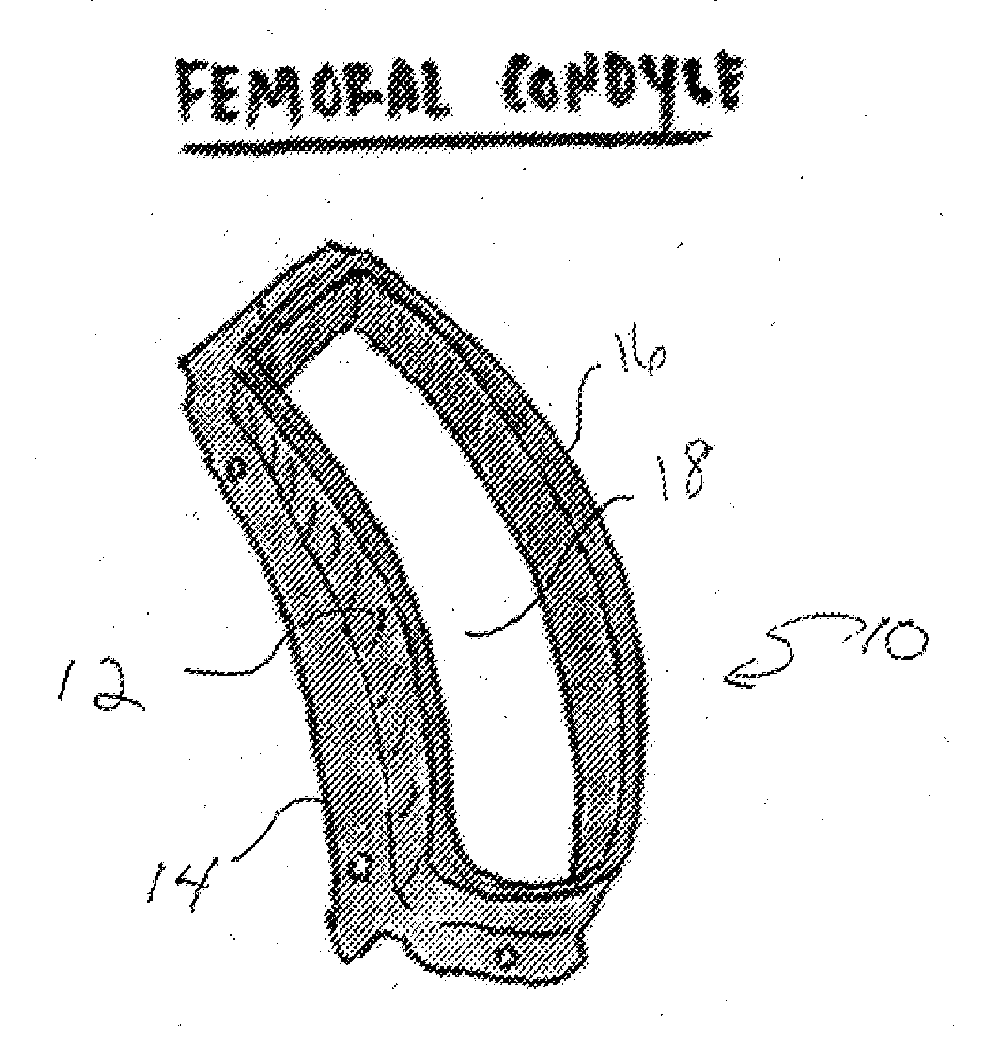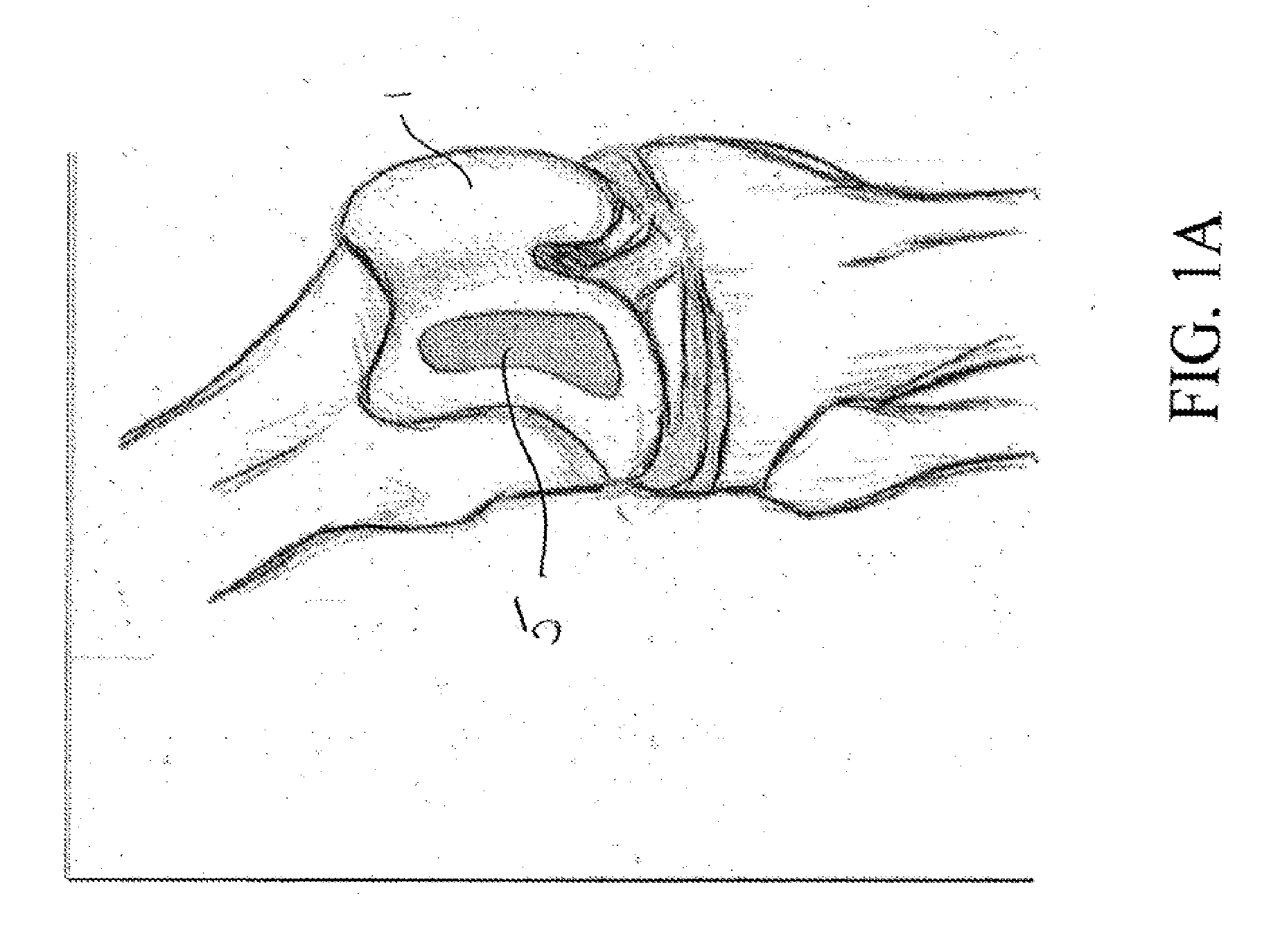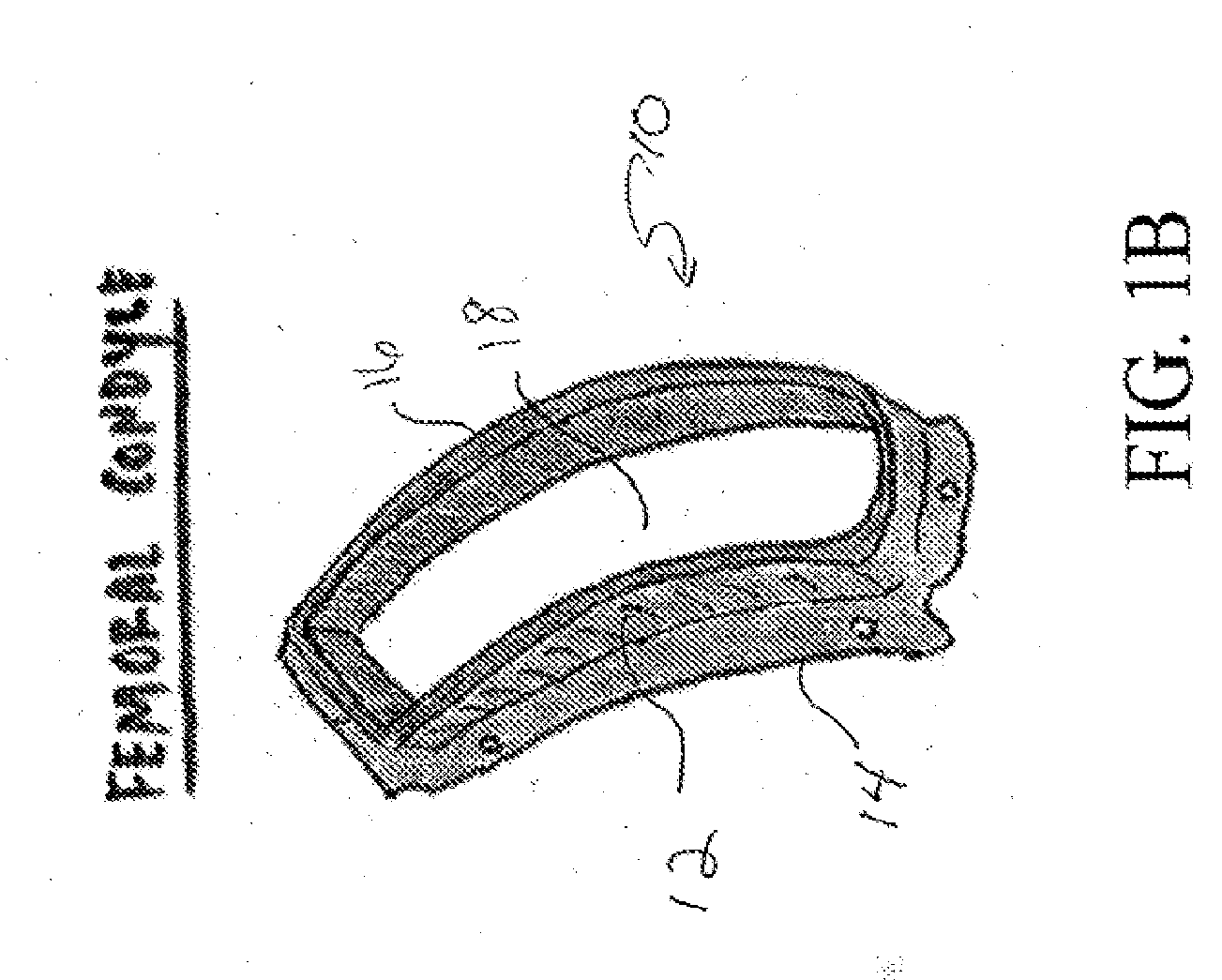System and method for three dimensional printed implantation guides
a three-dimensional printing and implantation guide technology, applied in the field of three-dimensional printing implantation guides, can solve the problems of lack of a reproducible process that may be used to fabricate size-specific customized bio-printed musculoskeletal tissue for use in various orthopedic applications, inability to precisely size, shape and contour the osteochondral and chondral graft material to be placed, and inability to develop the articular surface of joints
- Summary
- Abstract
- Description
- Claims
- Application Information
AI Technical Summary
Benefits of technology
Problems solved by technology
Method used
Image
Examples
Embodiment Construction
[0028]Unless defined otherwise, all technical and scientific terms used herein have the same meaning as is commonly understood by one of skill in the art to which this invention belongs.
[0029]In one aspect the present invention relates to a reproducible process that may be used to fabricate size-specific, customized bio-printed musculoskeletal tissue for use in various human and veterinary orthopedic applications. Articular cartilage grafts and osteochondral grafts for implantation into any joint are described herein as exemplary. However, the present invention may also be utilized with bone grafts, labral grafts, meniscal grafts, spine disc grafts and ligament grafts among other tissues. The process of the present invention will now be described.
[0030]Acquisition of Data:
[0031]Precise data is needed for creation of orthopedic tissue. We propose the use of high resolution CT arthrography of the body part in question. Conventional CT, electron beam CT or CT arthrography, Ultrasound, ...
PUM
| Property | Measurement | Unit |
|---|---|---|
| Width | aaaaa | aaaaa |
| Area | aaaaa | aaaaa |
| Depth | aaaaa | aaaaa |
Abstract
Description
Claims
Application Information
 Login to View More
Login to View More - R&D
- Intellectual Property
- Life Sciences
- Materials
- Tech Scout
- Unparalleled Data Quality
- Higher Quality Content
- 60% Fewer Hallucinations
Browse by: Latest US Patents, China's latest patents, Technical Efficacy Thesaurus, Application Domain, Technology Topic, Popular Technical Reports.
© 2025 PatSnap. All rights reserved.Legal|Privacy policy|Modern Slavery Act Transparency Statement|Sitemap|About US| Contact US: help@patsnap.com



